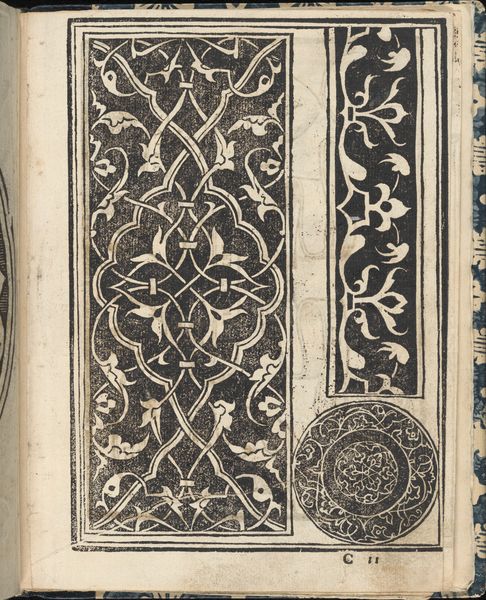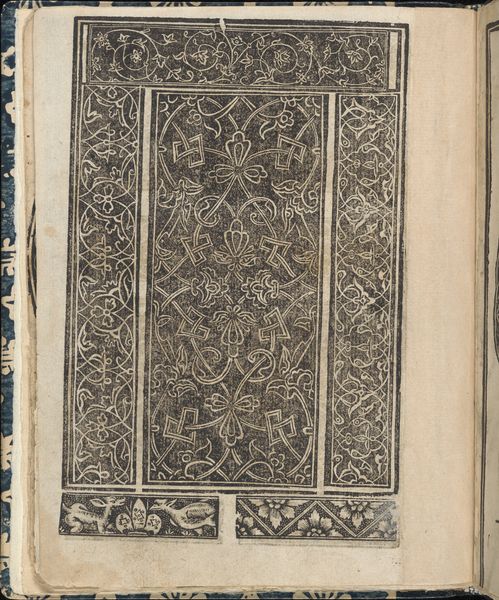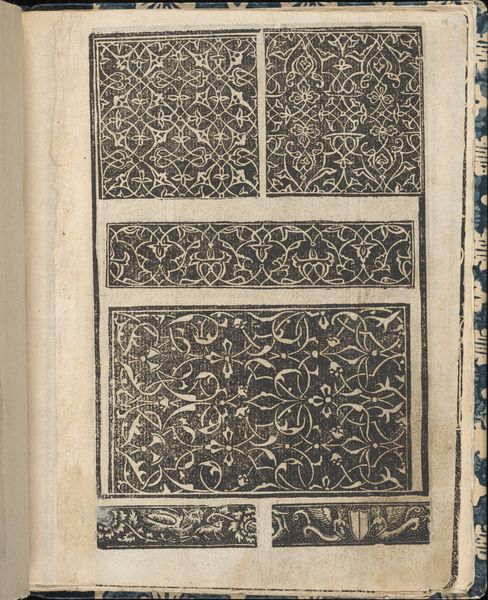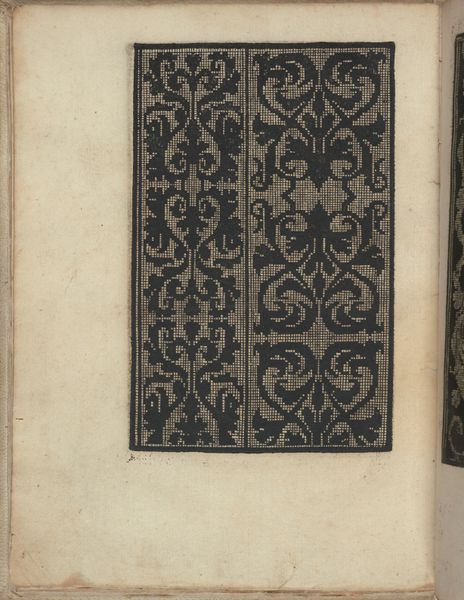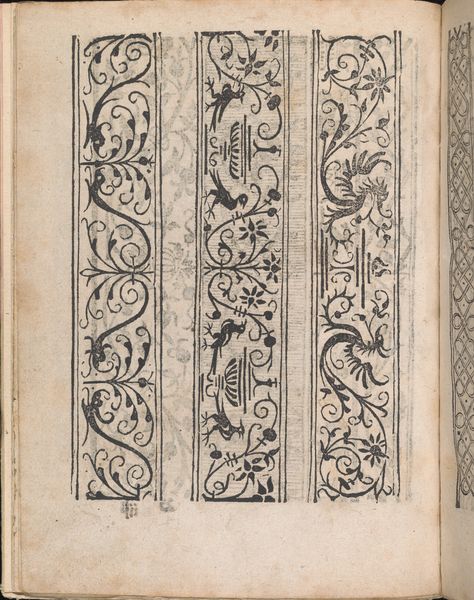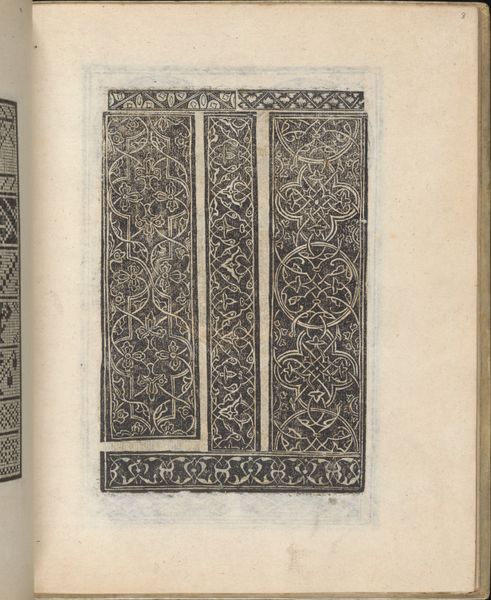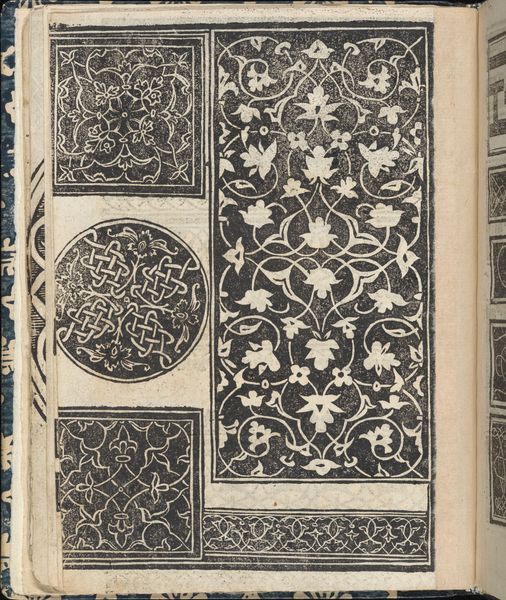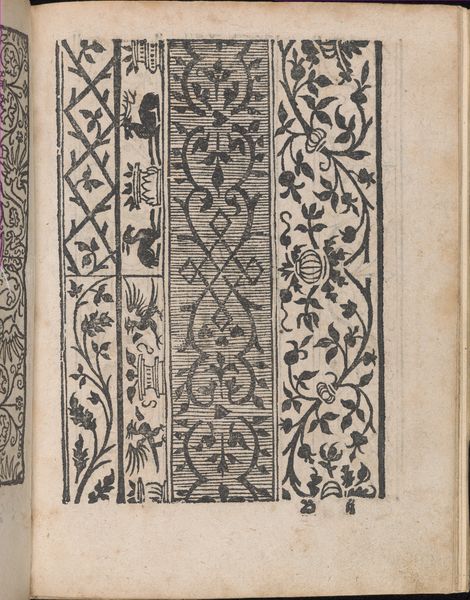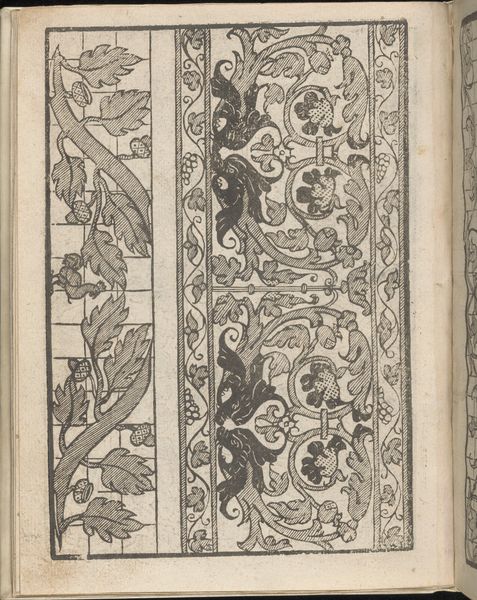
drawing, ornament, print, woodcut
#
drawing
#
natural stone pattern
#
aged paper
#
ornament
#
toned paper
#
homemade paper
# print
#
book
#
tea stained
#
11_renaissance
#
geometric
#
woodcut
#
men
#
decorative-art
#
italian-renaissance
#
calligraphy
Dimensions: Overall: 7 13/16 x 6 3/16 x 3/8 in. (19.8 x 15.7 x 1 cm)
Copyright: Public Domain
This is page 13 from Giovanni Antonio Tagliente’s “Esempi di Recami,” an instructional manual for embroidery patterns, printed in Venice in the 16th century. During the Renaissance, books like these played a crucial role in shaping not only artistic tastes, but also reinforcing gendered expectations. Embroidery was a highly valued skill for women, reflecting their domestic role and status. Pattern books democratized design, allowing for wider access to fashionable motifs. The book provided visual resources for women to learn and practice needlework, while simultaneously confining them to the domestic sphere. But, the act of creation allowed women to engage with art, express their creativity, and even subtly subvert social norms through personal embellishments. This page, like the others in the book, visualizes the intersection of art, gender, and social expectations in Renaissance society. It reminds us that the needle could be both an instrument of constraint and a tool for self-expression.
Comments
No comments
Be the first to comment and join the conversation on the ultimate creative platform.
